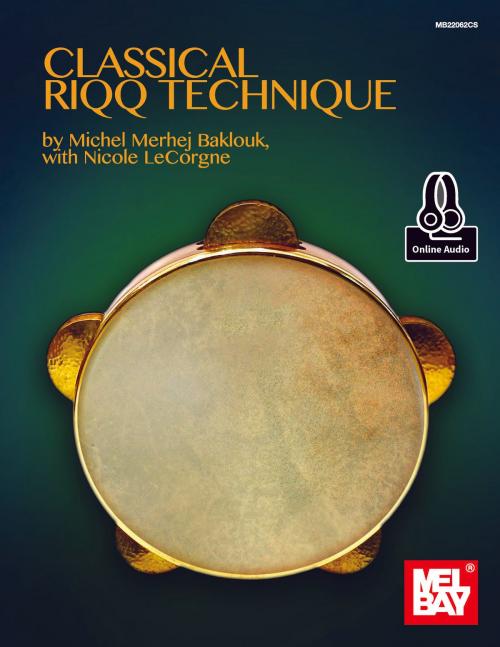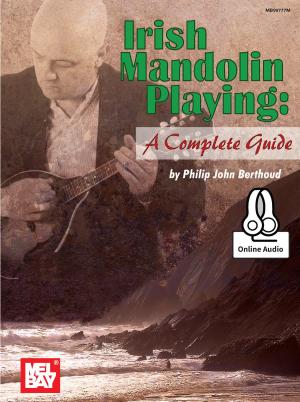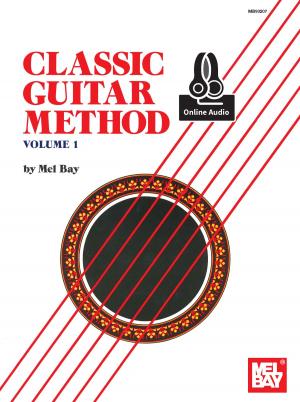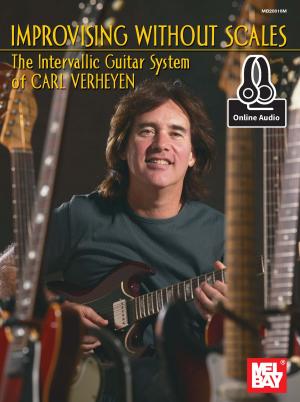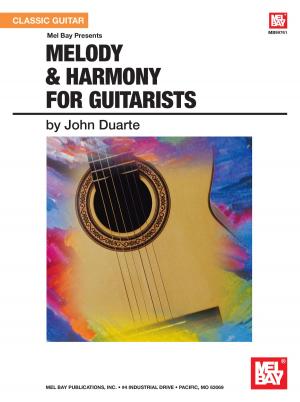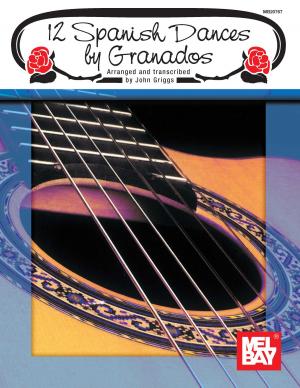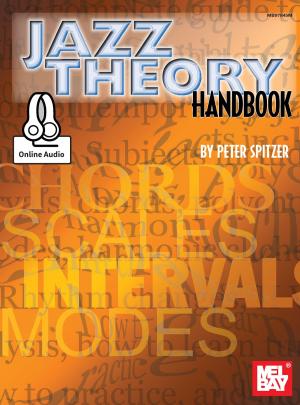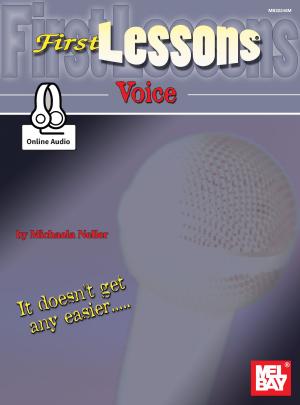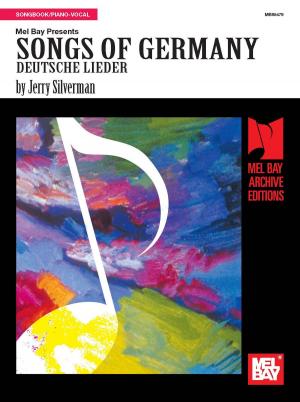Classical Riqq Technique
Nonfiction, Entertainment, Music, Instruments & Instruction, Percussion, General Instruments| Author: | Michel Merhej Baklouk, Nicol LeCorgne | ISBN: | 9781513408422 |
| Publisher: | Mel Bay Publications, Inc. | Publication: | June 23, 2016 |
| Imprint: | Language: | English |
| Author: | Michel Merhej Baklouk, Nicol LeCorgne |
| ISBN: | 9781513408422 |
| Publisher: | Mel Bay Publications, Inc. |
| Publication: | June 23, 2016 |
| Imprint: | |
| Language: | English |
Built around the life and teachings of master percussionist, Michel Merhej Baklouk, this book has been designed as a biographical tribute, a teaching manual, and a resource guide for anyone wishing to develop a deeper understanding of the role that percussion plays in Near Eastern Arabic music. This book differs from most technique manuals in that it includes historical information on about Arabic music as it pertains to the life and work of a single artist, Michel Merhej Baklouk.
The book is composed of three parts: Introduction, Lessons, and Reference Information. Each part is written to stand on its own as well as fit with the whole so that readers can approach the book either as individual articles and lessons, or in its entirety, to be read from cover to cover. By presenting Michel's work in this way, we hope to appeal to a wider audience, percussion students at varying skill levels and from varying music disciplines and backgrounds, students of music and Middle Eastern studies, or anyone else interested in twentieth century Arab music and culture.
The first part, Introduction, contains several essays about Michel's life, his teaching philosophy, pedagogical practices, musical aesthetics and performance practices. Although these sections may be read independently, they are also designed to help percussion students apply the book's lessons to their own playing and musical interpretations.
The technical focus of this book is on the riqq; however, students of Arabic music (beginning through advanced) can adapt the practical exercises to gain mastery of the percussion instrument(s) of their choice.
The second part, Lessons, begins with information about how to hold the percussion instrument (case in point: the riqq) and how to practice effectively. It then presents the body of exercises that Michel developed for his students. These exercises have been taken directly from Michel's notated lessons, which he developed into units corresponding to levels of proficiency, or academic years as he taught them at the Conservatory in Beirut; however, for the purposes of this book, the exercises are reorganized to correspond to subject matter and only roughly mirror Michel's conservatory sequence. Unit 1, Technique Building Exercises, is aimed at novice players or anyone who is new to reading music. Units 2 through 5 focus on specific rhythmic structures with increasing complexity. Students should master each unit of exercises before proceeding to the next unit. The third part, Reference Information, includes a notation reference, a list of rhythms, a list of further reading recommendations, and a glossary of Arabic music terms, many of which are used in the text. All Arabic words in this book appear in italics, except proper names, and with the exception of some proper Arab names, the text is essentially written in the standard system of transliteration used by the Library of Congress and most academic literature Throughout the book you will see quotations from Michel offset in the text. These prosaic tidbits may be words of wisdom, interesting anecdotes about Michel's life, or insights into his work and world of music.
Each provides a glimpse into the personality of this exceptional musician. As a technical manual for students of Arabic percussion, Classical Riqq Technique provides specific exercises and explores important concepts, some of which are rarely taught, even in private lessons. At the same time, this book strives for a broader goal, to present and preserve classical percussion from the perspective of a master who not only lived in but also influenced the golden age of Arabic music.
Built around the life and teachings of master percussionist, Michel Merhej Baklouk, this book has been designed as a biographical tribute, a teaching manual, and a resource guide for anyone wishing to develop a deeper understanding of the role that percussion plays in Near Eastern Arabic music. This book differs from most technique manuals in that it includes historical information on about Arabic music as it pertains to the life and work of a single artist, Michel Merhej Baklouk.
The book is composed of three parts: Introduction, Lessons, and Reference Information. Each part is written to stand on its own as well as fit with the whole so that readers can approach the book either as individual articles and lessons, or in its entirety, to be read from cover to cover. By presenting Michel's work in this way, we hope to appeal to a wider audience, percussion students at varying skill levels and from varying music disciplines and backgrounds, students of music and Middle Eastern studies, or anyone else interested in twentieth century Arab music and culture.
The first part, Introduction, contains several essays about Michel's life, his teaching philosophy, pedagogical practices, musical aesthetics and performance practices. Although these sections may be read independently, they are also designed to help percussion students apply the book's lessons to their own playing and musical interpretations.
The technical focus of this book is on the riqq; however, students of Arabic music (beginning through advanced) can adapt the practical exercises to gain mastery of the percussion instrument(s) of their choice.
The second part, Lessons, begins with information about how to hold the percussion instrument (case in point: the riqq) and how to practice effectively. It then presents the body of exercises that Michel developed for his students. These exercises have been taken directly from Michel's notated lessons, which he developed into units corresponding to levels of proficiency, or academic years as he taught them at the Conservatory in Beirut; however, for the purposes of this book, the exercises are reorganized to correspond to subject matter and only roughly mirror Michel's conservatory sequence. Unit 1, Technique Building Exercises, is aimed at novice players or anyone who is new to reading music. Units 2 through 5 focus on specific rhythmic structures with increasing complexity. Students should master each unit of exercises before proceeding to the next unit. The third part, Reference Information, includes a notation reference, a list of rhythms, a list of further reading recommendations, and a glossary of Arabic music terms, many of which are used in the text. All Arabic words in this book appear in italics, except proper names, and with the exception of some proper Arab names, the text is essentially written in the standard system of transliteration used by the Library of Congress and most academic literature Throughout the book you will see quotations from Michel offset in the text. These prosaic tidbits may be words of wisdom, interesting anecdotes about Michel's life, or insights into his work and world of music.
Each provides a glimpse into the personality of this exceptional musician. As a technical manual for students of Arabic percussion, Classical Riqq Technique provides specific exercises and explores important concepts, some of which are rarely taught, even in private lessons. At the same time, this book strives for a broader goal, to present and preserve classical percussion from the perspective of a master who not only lived in but also influenced the golden age of Arabic music.
